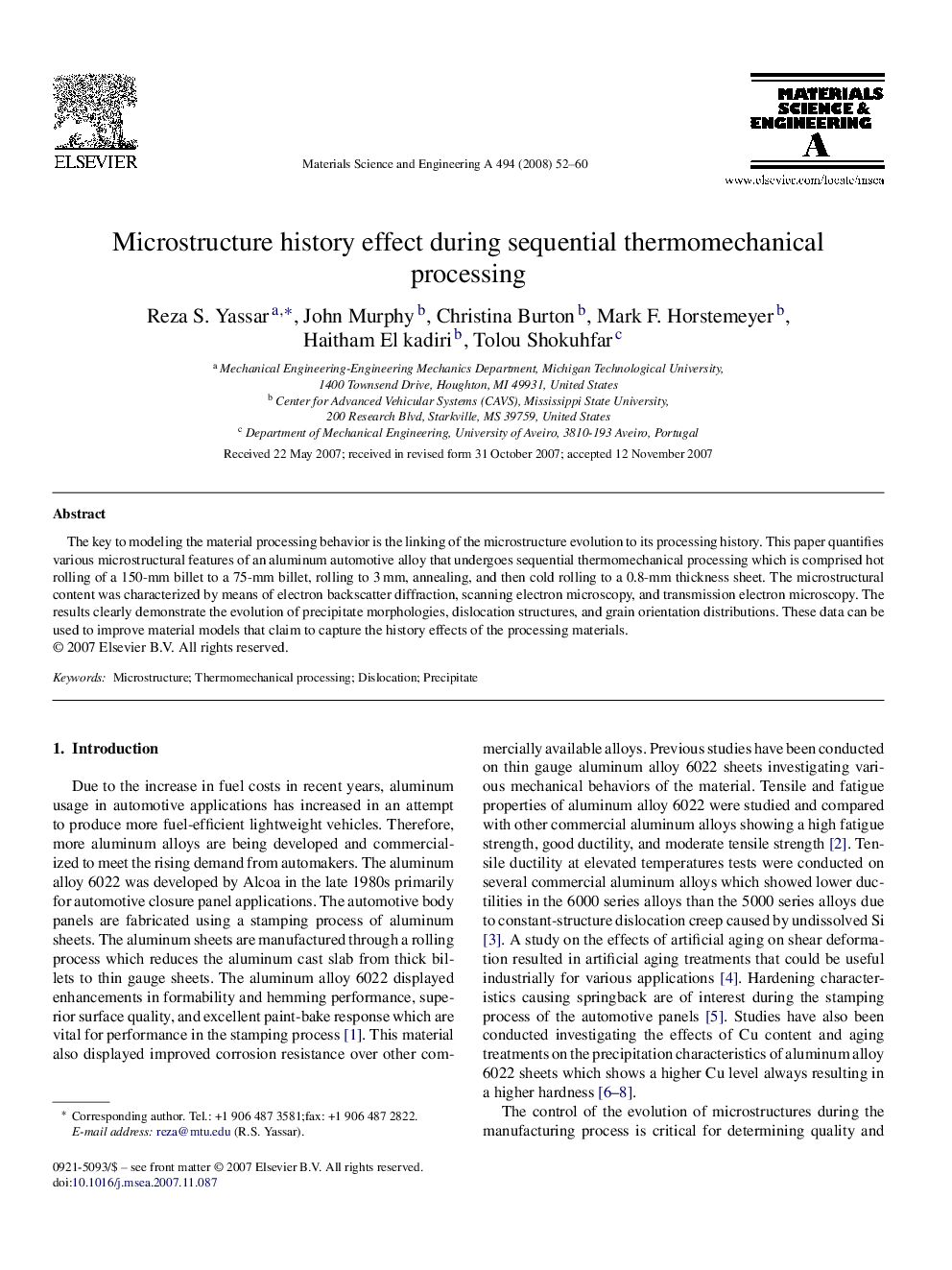| Article ID | Journal | Published Year | Pages | File Type |
|---|---|---|---|---|
| 1581949 | Materials Science and Engineering: A | 2008 | 9 Pages |
The key to modeling the material processing behavior is the linking of the microstructure evolution to its processing history. This paper quantifies various microstructural features of an aluminum automotive alloy that undergoes sequential thermomechanical processing which is comprised hot rolling of a 150-mm billet to a 75-mm billet, rolling to 3 mm, annealing, and then cold rolling to a 0.8-mm thickness sheet. The microstructural content was characterized by means of electron backscatter diffraction, scanning electron microscopy, and transmission electron microscopy. The results clearly demonstrate the evolution of precipitate morphologies, dislocation structures, and grain orientation distributions. These data can be used to improve material models that claim to capture the history effects of the processing materials.
